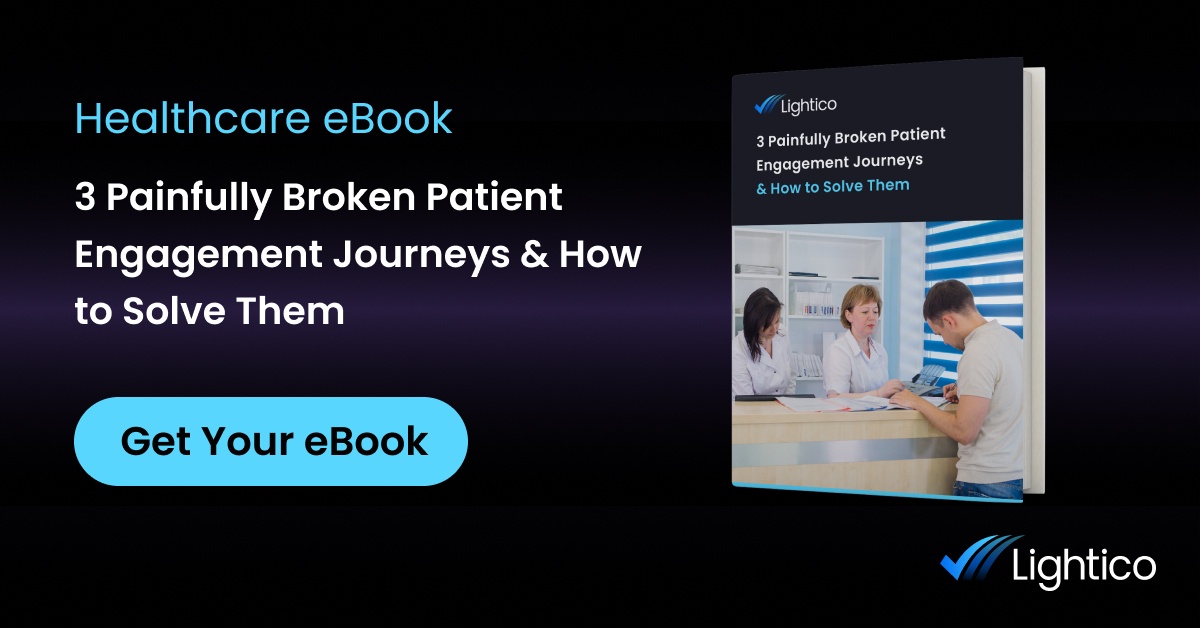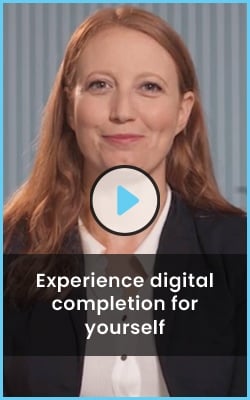Engaging and motivating patients to be more proactive in adhering to treatments, preventions and services that can improve their health and well-being is vital to providers to improve healthcare outcomes and greatly reduce strain and costs on the system through successful prevention.
In fact, engaged patients have proven to be
3 times less likely to develop unmet medical issues, and twice as likely to seek care in a timely manner when compared to unengaged patients. There are many important ways healthcare providers can engage their patients to enhance both health and business outcomes, including:
- Digital appointment scheduling
- Appointment and procedure prep instructions
- Automated patient check-in
- Condition-specific education and remote monitoring
- Providing follow-up information such as digital summaries after appointments
- Satisfaction surveys
The complexity of the healthcare system, cultural issues,
health literacy issues, and haphazard tools that fail to engage customers on the channels most convenient for them were already major issues providers have been contending with before the COVID-19. But they have taken on unprecedented importance in light of the rapid spread of transmissions, and the massive burdens and costs the pandemic is placing on providers and staff.

Engagement Tools Are Too Little Too Late for Dissatisfied Patients
Due to siloed systems and woefully outdated legacy processes, customers today are still forced to go through slow and complex
enrollment processes when joining a healthcare or medicare provider. Patient consumers are bounced across multiple channels, from the
contact center, to their email to fetch long and confusing PDF forms, gather medical records and payer info, and often must scan or fax several documents and consents - all just to register as patients.
Managing multiple systems and paperwork also stifles providers’ efforts to turn around ongoing
patient care, intake, billing and other servicing processes, making long wait times and friction-filled patient experiences more the norm than the exception.
That’s why by the time an existing patient receives education on how to improve their health or is sent a link asking them to fill out a satisfaction survey, providers are already fighting an uphill battle.
Patients that have already experienced painfully bureaucratic and inconvenient experiences every time they turned to their healthcare provider are far less likely to be receptive to patient engagement attempts down the line.
Fragmented Engagement Tools Miss the Mark with Patients
Many providers today have invested in numerous methods to optimize patient engagement, including portals, mobile apps, telephony and chat software to enable appointment scheduling, send out reminders, educate on how to prepare for upcoming procedures, and conduct satisfaction surveys. But these disparate patient engagement tools are siloed and delivered across separate channels - which results in inconsistent customer experience and the annoying inconvenience of being engaged via multiple channels.
These fragmented engagement methods lag behind the needs and behavior of today’s consumers, who have become used to mobile experiences that are visual, intuitive, instant and seamless. 57% of Americans
spend 5 hours or more on their mobile phone every day, while for 19% of millennials
smartphones are the
only way they connect online.
Mobile apps have not yielded the engagement providers have hoped for, as many patients are put off by the need to download a healthcare providers’ app from the store and log in each and every time they receive a notification.
Sub-par patient engagement tools undermine providers’ ability to provide important education materials to patients. A
national survey by the Center for Advancing Health revealed that almost 30% lacked the basic facts and understanding of treatment requirements.
Streamlining Digital Experience & Engagement Throughout the Patient Lifecycle
For healthcare systems, medicare providers and DSOs, successful patient engagement must span the entire patient lifecycle, beginning with enrollment, supporting quick, efficient and compliant access to care, and proactively engaging them on the channels most convenient for them with the knowledge they need to be more active in their own care.
This requires reimagining current patient interactions and eliminating the digital silos and outdated legacy processes that frustrate customers with long and complicated onboarding, care delivery and coverage, overwhelm healthcare employees, and harm compliance.
To put an end to broken patient experiences, siloed digital systems and paperwork need to make way for one unified compliant platform that intelligently
automates patient interactions from start to finish.
By leveraging
Digital Completion technology, providers can digitize engagement end-to-end, and capture all requirements they need from patients in one secure and compliant digital session optimized for mobile.
The Huge Opportunity of Completely Digital Patient Engagement
Managing patient engagement with one unified and compliant digital platform allows healthcare providers to improve health and business outcomes in parallel by:
- Communicating with patients at the right time and on the channel they prefer to be engaged with the most.
- Instantly capturing all data provided by the patient and integrate seamlessly with EHR and all relevant backend and customer-facing systems
- Delivering consistent customer experience by having one unified customer-facing front-end
- Enabling patients to easily and quickly interact in a visual and mobile-friendly interface without needing to download or log into an app
- Gaining real-time visibility into patient engagement activity and progress
- Ensuring end-to-end encryption to protect patient data and ensure HIPAA compliance
Healthcare providers can seize the opportunities of digital innovation to accelerate business and operational efficiencies so that they can enhance engagement throughout their lifecycle.






